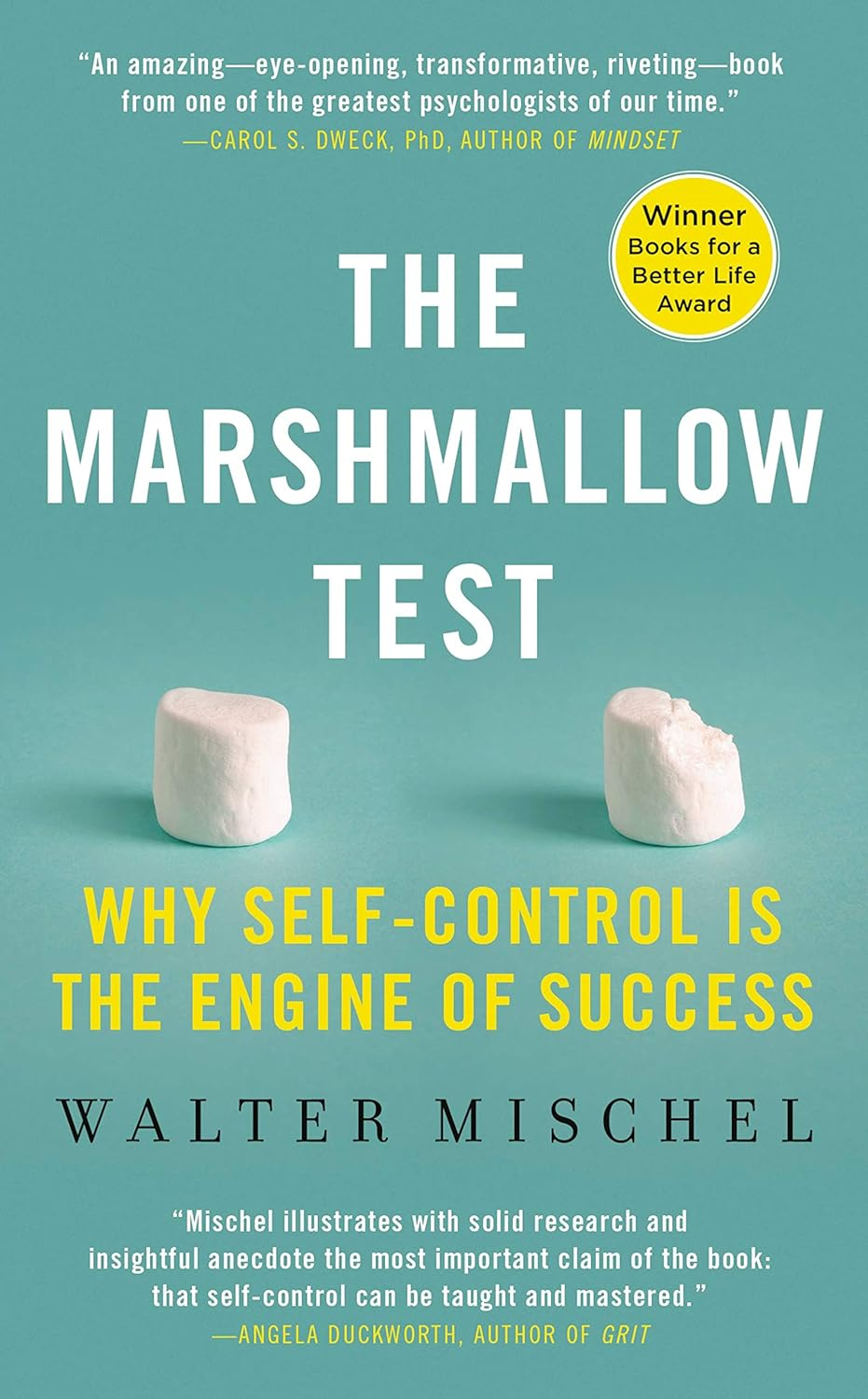← The Marshmallow Test Mastering Self Control
The Marshmallow Test Chapter 3 Thinking Hot and Cool
Author: Walter Mischel Publisher: New York, NY: Little, Brown and Company. Publish Date: 2014-9 Review Date: Status:💥
Annotations
43
THE HOT EMOTIONAL SYSTEM
43
The limbic system
43
These structures regulate basic drives and emotions essential for survival, from fear and anger to hunger and sex.
43
the amygdala,
43
plays a key role in fear responses and in sexual and appetitive behavior. The amygdala rapidly mobilizes the body for action. It does not pause to think and reflect or worry about long-term consequences.
43
We still have a limbic system that works much as it did for our evolutionary ancestors. It remains our emotionally hot Go! system, specialized for quick reactions to strong, emotion-arousing stimuli that automatically trigger pleasure, pain, and fear.
44
Activation of the hot system triggers instantaneous action: hunger for food and desire for other alluring stimuli elicit rapid hot Go! behaviors; threats and danger signals elicit fear and automatic defensive and flight reactions.
44
The hot system is somewhat similar to what Freud called the id; he saw this as the unconscious structure of the mind, which contained sexual and aggressive biological impulses to seek immediate gratification and tension reduction, impervious to the consequences.
44
A focus on the hot features of a temptation easily triggers the Go! response. In the marshmallow experiments, I’ve watched a preschooler’s hand suddenly lurch out and hit the bell hard, as the surprised child looks down in distress to see what his hand has done. For four-year-olds, the trigger can be anticipating the chewy, sweet taste of the marshmallows; for dieters, alcoholics, and smokers, each of the hot features has its own distinctive pull that can make its victims helpless. Even the sight or thought of the candy bar, or the whiskey, or the cigarette can elicit the action automatically. And the more often that happens, the more difficult it becomes to change the mental representation and avert the automatic Go! response. Learning and practicing some strategies for enabling self-control early in life is a lot easier than changing hot, self-destructive, automatic-response patterns established and ingrained over a lifetime.
45
High stress activates the hot system. This response was adaptive in evolutionary history for dealing with oncoming lions because it produces amazingly rapid (in milliseconds), automatic, self-protective reactions, and it is still useful in many emergencies in which survival requires instant action. But this hot response is not useful when success in a given situation depends on staying cool, planning ahead, and problem-solving rationally. And the hot system is predominant in the first few years of life, which makes it especially difficult for the young preschooler to exert self-control.
45
THE COOL COGNITIVE SYSTEM
45
Closely interconnected with the brain’s hot system is its cool system, which is cognitive, complex, reflective, and slower to activate. It is centered primarily in the prefrontal cortex (PFC). This cool, controlled system is crucial for future-oriented decisions and self-control efforts of the kind identified in the Marshmallow Test. It’s important to note that high stress attenuates the cool system and accentuates the hot system. The hot and cool systems continuously and seamlessly interact in a reciprocal relationship: as one becomes more active the other becomes less active. Although we rarely deal with lions, we daily face the endless stresses of the modern world, in which the hot system is often up, leaving us with our cool system down just when we need it most.
45
The PFC is the most evolved region of the brain. It enables and supports the highest-order cognitive abilities that make us distinctively human. It regulates our thoughts, actions, and emotions, is the source of creativity and imagination, and is crucial for inhibiting inappropriate actions that interfere with the pursuit of goals. It allows us to redirect our attention and to change strategies flexibly as the requirements of the situation shift. Self-control ability is rooted in the PFC.
46
The cool system develops slowly and becomes gradually more active in the preschool years and the first few years of elementary school. It does not fully mature until the early twenties, leaving the young child as well as the adolescent greatly vulnerable to the vicissitudes of the hot system. Unlike the hot system, the cool system is attuned to the informational aspects of stimuli and enables rational, reflective, and strategic behavior.
